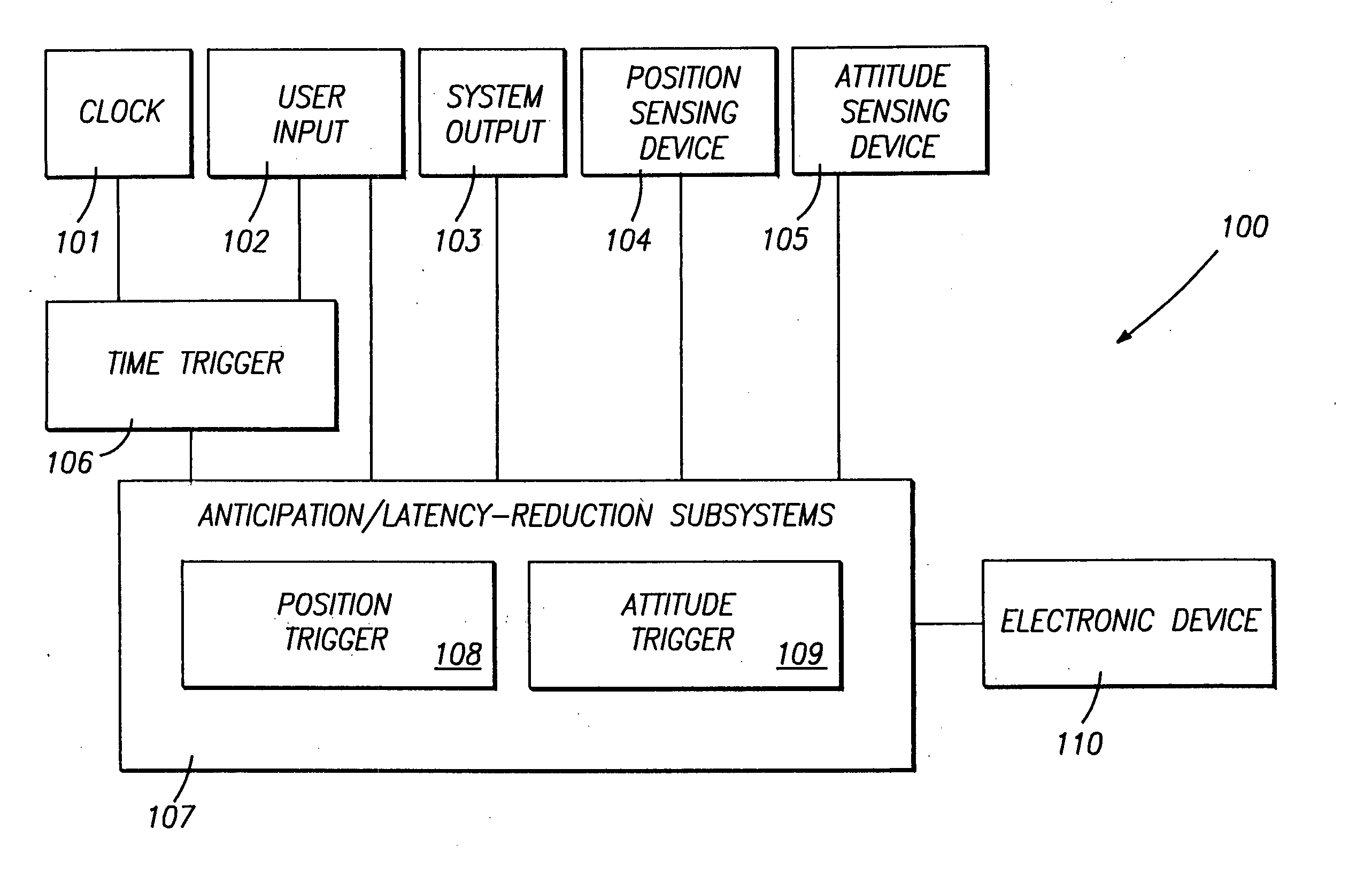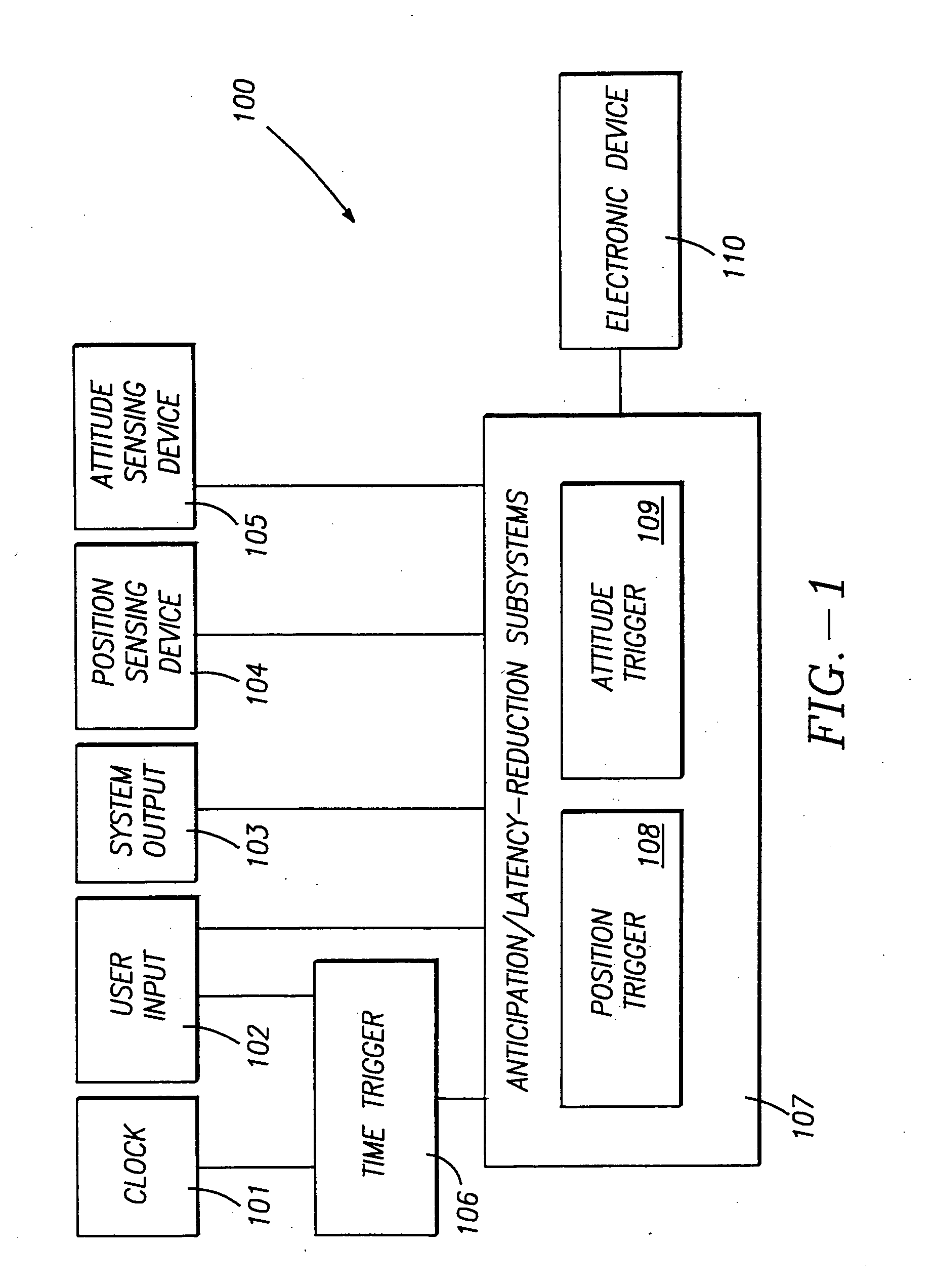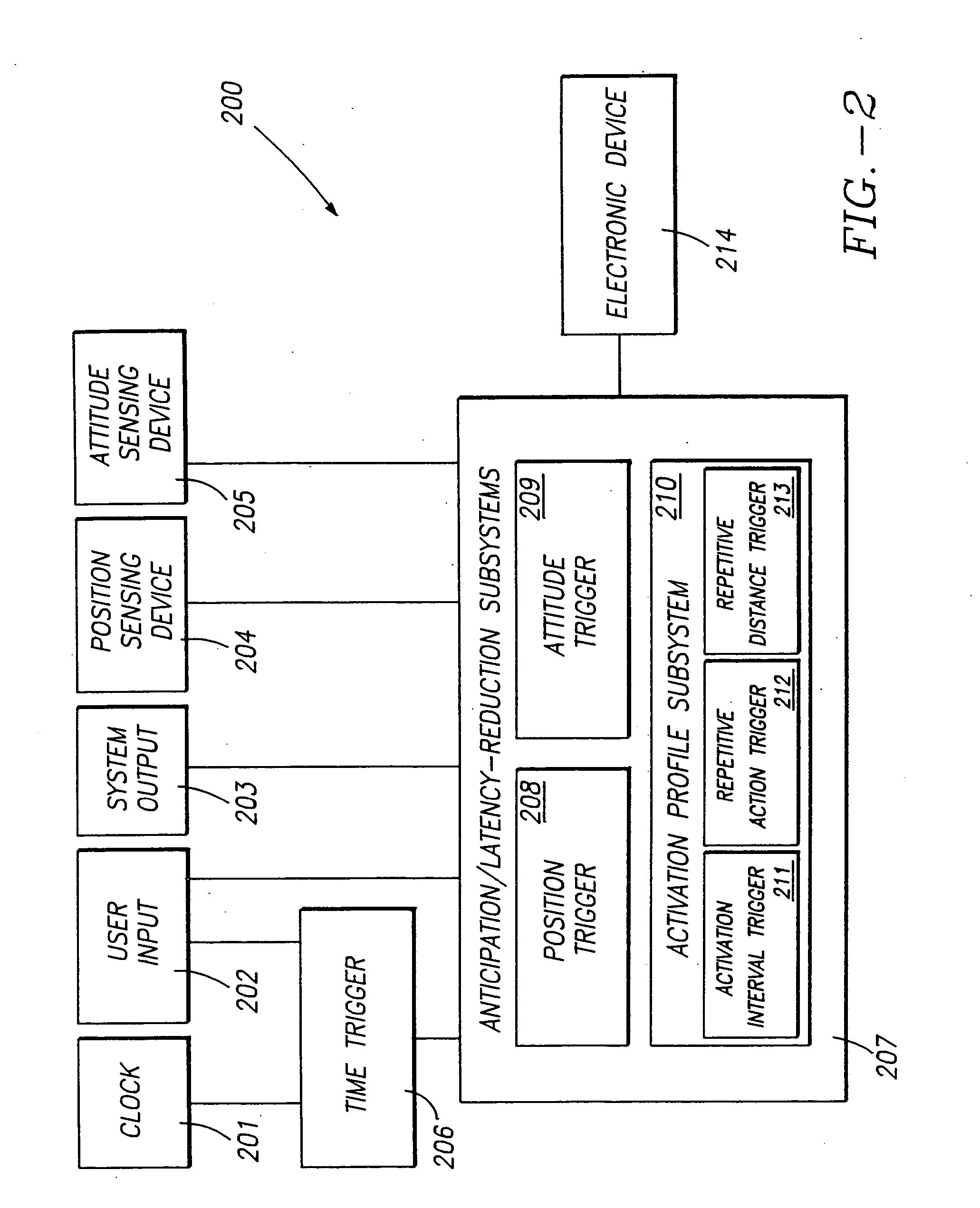Method and apparatus for controlling the operational mode of electronic devices in response to sensed conditions
a technology of operational mode and electronic device, applied in the direction of programme control, instruments, high-level techniques, etc., can solve the problem of electric device deactivating power hungry components
- Summary
- Abstract
- Description
- Claims
- Application Information
AI Technical Summary
Benefits of technology
Problems solved by technology
Method used
Image
Examples
first embodiment
FIG. 1 illustrates a block diagram of system 100 which is the invention. This system 100 is a device usage detection system that monitors the physical characteristics of an electronic device 110 or monitors other predefined conditions in order to activate or otherwise control the electronic device 110. System 100 activates or controls device 110 when the system detects indications of intent to use or other predefined conditions. System 100 comprises a clock 101, a user input 102, a system output 103, a position sensing device 104, an attitude sensing device 105, a time trigger 106, and an anticipation / latency-reduction subsystem 107. The clock 101, the time trigger 106, and the anticipation / latency reduction subsystem 107 form a control subsystem. Alternate embodiments are not limited to this particular control system or to control systems that have structure equivalent to this particular control system. The user input 102 can be any form of input mechanism including without limitat...
second embodiment
FIG. 2 is a block diagram of a system 200 that is the invention. The system 200 includes components that operate in the same manner as those described with respect to the system 100. The similar components are numbered similarly (e.g. time trigger 206 operates in the same manner as time trigger 106). In addition to having such similar components, system 200 includes an activation profile subsystem 210. This subsystem 210 is included as part of the anticipation / latency-reduction subsystem 207 of system 200.
Subsystem 210 is designed to allow the system 200 to recognize, over a period of use, repetitive actions taken by a user or other repetitive conditions that occur prior to activation of device 110. Based upon this recognition, the subsystem 210 develops specific activation profiles that are associated with particular repetitive actions or particular repetitive conditions. These activation profiles allow the system 200 to recognize the particular repetitive actions or conditions as...
PUM
 Login to View More
Login to View More Abstract
Description
Claims
Application Information
 Login to View More
Login to View More - R&D
- Intellectual Property
- Life Sciences
- Materials
- Tech Scout
- Unparalleled Data Quality
- Higher Quality Content
- 60% Fewer Hallucinations
Browse by: Latest US Patents, China's latest patents, Technical Efficacy Thesaurus, Application Domain, Technology Topic, Popular Technical Reports.
© 2025 PatSnap. All rights reserved.Legal|Privacy policy|Modern Slavery Act Transparency Statement|Sitemap|About US| Contact US: help@patsnap.com



